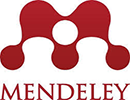TPACK APPROACH TO LEARNING CREATIVE DANCE CLASS XI IIS 3 SMA NEGERI 1 ANYER
Abstract
This research aims to examine more deeply the application of the TPACK approach to creative dance learning in class XI IPS SMA Negeri 1 Anyer. The research method used is descriptive qualitative through observing, understanding, describing and analyzing data. Data collection techniques in the form of observation, interviews, and documentation. The results of the study show that from the learning implementation process to the results of the overall evaluation of learning with the application of the TPACK approach, it is carried out in accordance with the research indicators, namely the seven components of the TPACK approach, including CK, PK, TK, PCK, TCK, TPK, and TPACK. In addition, SMA Negeri 1 Anyer has facilities and infrastructure that are able to properly support the TPACK-based learning process. In addition to making it easier for teachers and students, the involvement of the use of technology in learning can encourage students' enthusiasm for learning, so that they can improve their ability to learn both at school and outside the school environment.
Keywords
Full Text:
PDFReferences
Fathurrohman, M. (2018). Mengenal Lebih Dekat Pendekatan dan Model Pembelajaran.
Depok Sleman Yogyakarta: Kalimedia.
Festiawan, R. (2020). Belajar dan Pendekatan Pembelajaran. Jawa Tengah: Universitas
Jenderal Soedirman.
M.Pd, D., M.Pd, N., & Bahri M.Pd, A. (2021). Teori Belajar dan Pembelajaran. Makassar:
LPP UNISMUH Makassar Anggota.
Mamik. (2015). Metodologi Kualitatif. Taman Sidoarjo: Zifatama.
Masdewantara, D. (2021). ICT & Pendekatan Heutogogi dalam Pembelajaran Abad ke-21.
Yogyakarta: DEEPUBLISH.
Mikaresti, Pamela, & Mansyur, H. (2022). Pewarisan Budaya Melalui Tari Kreasi Nusantara.
Jurnal Seni Rupa, 11, 149-150. doi:10.24114/gr.v11i1.33333
Refbacks
- There are currently no refbacks.
Copyright (c) 2024 Universitas Pendidikan Indonesia

This work is licensed under a Creative Commons Attribution-ShareAlike 4.0 International License.




